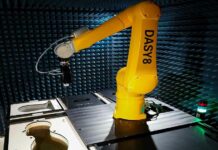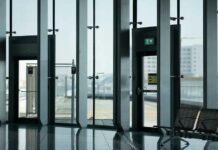Forklifts can be extremely handy to have for a wide range of projects. Standard forklifts can lift up to 5,000 pounds, while some heavy-duty models are rated to lift up to 25,000 pounds. But you may not need a forklift around all the time, which is why forklift rental in Toronto is a great option. You can rent a forklift for the times you need them and pay nothing for a forklift when you don’t.
However, before you hop on a forklift and start moving heavy loads around, take some time to learn the basics of forklift safety. Since renters don’t use one all the time, they may not know how to operate one safely. The safety tips here will help you remain safe while using a rental forklift.
Train
Nothing can substitute for actual forklift training, especially when it comes to safety. People who don’t have the proper training and knowledge of forklift operation can be as dangerous as someone who drives a car without a license. While renters do not need to be licensed to operate a forklift in Canada, they do need to be trained to CSA standards. It is the employer’s responsibility to ensure all forklift drivers are properly trained and receive extra training and supervision as necessary.
Moreover, just because you’re trained on one type of forklift does not mean you automatically know how to operate all forklifts. Each forklift model maneuvers slightly differently and as they increase in size, they may even have different controls. The best step to take is to always read the user manual for any new forklift you’re renting to make sure you understand how to operate it correctly. If you feel like you need more training, request it from your employer.
Inspection
Many forklift injuries are the result of damaged or improperly maintained equipment. It’s the operator’s responsibility to inspect their rental forklift for any signs of wear or damage before they use it. Certainly, the rental company should also inspect it when it’s returned from the previous renter, but if they miss anything, it could present an unsafe situation for you. And, if you’re renting the machine for several days or weeks, a daily inspection will ensure it remains safe for the duration of your rental period.
Before starting the forklift for the day, check its seatbelts, lights, horn, tires, brakes, backup alarms, and fluid levels. If anything needs to be repaired or remedied, do not operate the forklift until that task is completed. Also check the moving and load-bearing parts of the forks for any damage or wear. The forks themselves can bend or even crack, especially if you’re dealing with loads at the top end of their limits. Do not operate a forklift that has bent, cracked, or otherwise damaged forks.
Seatbelt
Just as you should always wear a seatbelt in a personal or work vehicle, you should also wear a seatbelt when operating a forklift. The reason for this is not because you could be ejected from the cab of the forklift in an accident (although this can happen, especially if you’re operating it at top speed), but instead, it’s because a seat belt will prevent you from jumping out of the cab if it tips over. Instinctually, you’ll want to jump out if you feel the forklift tipping, but this is how many forklift injuries occur.
Approximately 50% of forklift accidents involve overturned machines and most of those are due to the operator jumping from the cab and getting crushed between the vehicle and the ground. It might be inconvenient for you to wear a seatbelt while you’re operating a forklift, especially if you are frequently in and out of the cab. But, if the forklift tips over, you’ll appreciate having your seatbelt fastened.
Stability Triangle
Speaking of tipping over, forklift operators should understand the “stability triangle” concept before ever lifting a load on the forks. Forklifts are built on a three-point suspension system, which resemble a triangle. There are support points on both ends of the front axle and one support point at the middle of the rear axle. It’s critical that the operator stay in this stability triangle at all times when operating the forklift.
Several factors can cause an operator to violate the stability triangle, including an unstable load, an overly heavy load, a wide load, a raised load, fast stops and starts, rough terrain, and taking corners too quickly. To stay within the stability triangle, be sure any load you lift is completely stable and secure on the forks, lower loads close to the ground when driving the forklift, drive slowly when carrying a load, and slow down even further when making a turn or going around a corner.
Load Basics
Knowing how to properly load a forklift is extremely critical before ever operating one. First, ensure the load you’re going to lift is within the forklift’s capacity. You may not know the exact weight you want to lift, but have at least a ballpark idea and don’t lift it if you think it could be beyond what the forklift is capable of handling. The load should also meet stability and dimension requirements before you begin operation.
When you go to pick up the load, square up to it so that the forklift is perfectly perpendicular to the load. In other words, do not approach a load from an angle. Move the forks as far apart as possible before driving them under the load. The wider the forks are, the more stable the load will be when you lift it. Ensure the load is centered on the forks and that it is not causing the forks to bend, which is a sign that you’ve overloaded the forklift.
When unloading the load, square up to the placement spot and be sure you’re lowering it onto a level and stable surface. Refrain from placing heavy loads on top of lighter ones and always ensure the load is stable before removing the forks from under it.
Conclusion
Renting a forklift can solve a lot of problems on a job site, especially if you don’t want the hassle and expense of owning one. Just make sure you know how to operate a forklift safely before you get behind the controls. Your life could depend on it.




























